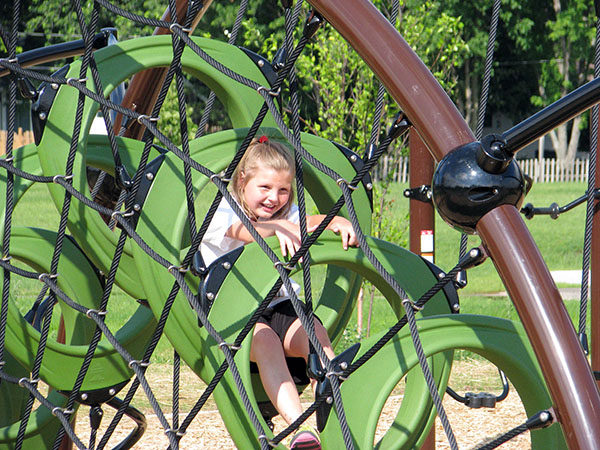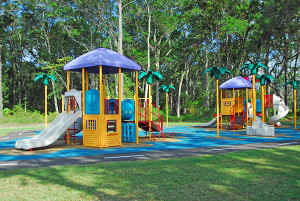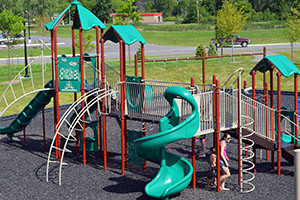Inspections Keep Safety First at Public Playgrounds
 Spring break heralds the beginning of playground season for children throughout the nation. As the school year winds down and outdoor park and recreation programs wind up, those swings, slides, climbing bars, and seesaws are going to get a workout.
Spring break heralds the beginning of playground season for children throughout the nation. As the school year winds down and outdoor park and recreation programs wind up, those swings, slides, climbing bars, and seesaws are going to get a workout.
Is your public playground ready? Each year more than 200,000 injuries happen on playgrounds, according to the National Recreation and Park Association.
Now is the time to check equipment for hazards so children can play safely. Here’s what to watch for:
 1. Nearly 80% of playground injuries are caused by falls – you know how much children love to climb. Concrete, blacktop, packed earth, and grass are not safe surfaces for areas under play equipment. Look for such surfaces as wood fiber and wood chips, synthetic and rubber tiles, poured-in-place rubber, shredded rubber, and mats. Sand and pea gravel are no longer recommended; sand is acceptable only if the playground is at a waterfront or beach site.
1. Nearly 80% of playground injuries are caused by falls – you know how much children love to climb. Concrete, blacktop, packed earth, and grass are not safe surfaces for areas under play equipment. Look for such surfaces as wood fiber and wood chips, synthetic and rubber tiles, poured-in-place rubber, shredded rubber, and mats. Sand and pea gravel are no longer recommended; sand is acceptable only if the playground is at a waterfront or beach site.
2. Make sure that safe surfacing extends a minimum of 6 feet in all directions from the edge of stationary play equipment, such as climbing equipment. Swings need a much larger use zone – two times the height of the swing hanger in front of and behind the swing seat. Enclosed tot swings need a smaller use zone. The exit zone for slides should be between 6 and 8 feet, depending on the slide’s height.
 3. Beware of elevated surfaces that have no guardrails, especially on equipment intended for preschool children. For preschoolers, the NRPA recommends guardrails on elevated platforms higher than 20 inches and protective barriers on platforms higher than 30 inches. For school-age children, install guardrails on equipment higher than 30 inches and protective barriers on equipment higher than 48 inches.
3. Beware of elevated surfaces that have no guardrails, especially on equipment intended for preschool children. For preschoolers, the NRPA recommends guardrails on elevated platforms higher than 20 inches and protective barriers on platforms higher than 30 inches. For school-age children, install guardrails on equipment higher than 30 inches and protective barriers on equipment higher than 48 inches.
4. Remember the “good old days” when slides got so hot you could burn yourself? An adult can pull away from a hot surface, but children’s reflexes aren’t so fast when bare legs encounter burning-hot metal. Check metal decks, slides, and steps to see how hot they get in the sun; shade structures help to regulate surface temperatures.
5. Inspect equipment for protruding hardware – bolts, hooks, rungs – that could cut or impale a child or catch on strings from a child’s clothing. Make sure equipment is securely anchored in the ground and that it is free of rust, splinters, and missing parts. Metal or wooden swing seats should be replaced with soft seats.
6. Check the playground site for tripping hazards – exposed concrete footings, rocks, tree stumps.
You can see safety features incorporated into a number of our playground designs including Wanick Park in Sherwood, Wisconsin; Goffinsville Park in Nassau County, Florida; and Fritsch Park in the Town of Menasha, Wisconsin.
Regular inspections help keep playgrounds safe for the children in your community. Are your public playgrounds safe? If you’re not sure, our playground experts can help you conduct a safety audit. Contact one of our landscape architects, to discuss your playground rehabilitation or design needs.

Post a comment: